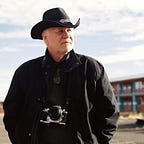Click, Wind, Click, Wind… Ahh — The Glorious Smell of Fixer
24 Frames in May is a photo exhibition of analog imagery.
24 Frames in May is a contest/show I do every May. We are half way through May, so if you are interested, check out the rules (always rules, but ours are really simple), and shoot your roll of 24 frames in the next two weeks.
Some of the truly great old film cameras:
The Pentax K1000 is widely regarded as one of the best-selling 35mm film SLR cameras of all time.
It was one of the simplest of all the cameras with only essential controls, aperture, shutter speed, and ISO. Bam.
No batteries (other than the meter).
Nearly indestructible.
Access to some of the best glass around, the Pentax K-mount lenses.
Inexpensive.
My bud has one… never seen a repair shop, and he shoots with it a couple dozen times a year.
Other top-selling used 35mm film cameras include:
- Canon AE-1 and AE-1 Program — These were extremely popular entry-level 35mm SLRs in the 1970s and 80s.
- Olympus OM-1 and OM-2 — Compact, robust SLR systems that were best-sellers for Olympus.
- Nikon FM, FE, and F series — The legendary Nikon F-mount SLRs like the FM2, FE2, F3, and F4 were immensely popular professional and enthusiast cameras. I have the F2, F3, F4, and F5
- Canon EOS — I love my EOS Canon film cameras. The ergonomics were insane, and they still fit your hand like a glove. Excellent, high end tools.
- Leica M3 and M6 — Among the most coveted and expensive used rangefinder cameras on the market today.
- Contax G1 and G2 — Advanced compact rangefinders with excellent Carl Zeiss lenses that remain popular on the used market.
These classics are going up in price, and quickly. If you think you may be interested in shooting some film — and there are lots of reasons why you should consider it — get your camera and lens(es) as soon as you can.
I shoot my film cameras like they are view cameras… slow and deliberate.
When I take my big ol’ Deardorff out to shoot, I am cognizant of the fact that each image is about $30. Click one — $30. Click two — $60… adds up fast.
I have gone out for a weekend with only four or six sheets of film. I take my time and try to not waste a shot.
So when I am shooting my F4, or Fuji 680, I slow down and make sure the image is composed, and all settings are what I want, and then commit the image in a dramatic flourish of button pressing!
Back in the day, I would burn through a roll in the time it would take my assistant to load the second body. My fashion style was fast and furious.
Today — no fashion — just life. Much less anarchy, much more deliberate concentration.
Here are eight reasons I have to shoot film in the digital age:
- Film — even scanned — has a unique look and aesthetic that is difficult to replicate digitally. You may appreciate the distinctive qualities of film that digital cannot quite match.
- Film has a higher dynamic range, allowing for better highlight and shadow detail recovery compared to digital sensors. This differential is changing with the introduction of new sensors (Fuji, Sony), but it still delivers a softer, gentler image.
- Shooting film slows you down and creates a more deliberate approach with each frame. This can improve your composition and technique. A lot.
- Film negatives and prints are tangible, permanent objects less susceptible to data loss or technological obsolescence compared to digital files. Yeah, I got a RAID, but the negative is that precious artifact that is going to be more valued as digital becomes blase’.
- The process of developing film can be therapeutic and meditative for some photographers. Yes, I said it. We move so fast these days. Spending some time spooling the film, agitating it for 12 minutes, fixing, hanging, and drying it can almost be Zen-like relaxation.
- Film cameras don’t require electricity, allowing photography without technology in any environment. This is not necessarily true for the later models. F4s and up need batteries, as do my Fuji 680 and Bronica GS.
- Many excellent film cameras and lenses can now be acquired inexpensively on the used market. But the market is going up… fast. Film cameras are a fixed quantity. Unlike digital, which seem to create a new camera weekly, film cameras have a limited amount of what exists right now.
- Using a film camera avoids frequent equipment upgrades and expenses associated with digital. The entire approach to cameras changed with digital. With film, the box was not a part of the excellence of the image — that was glass and film. Now the box itself is the creator of the quality of the image.
These are fun reasons, but my reasons are based on the contemplative and structured shooting that making images on an analog medium brings.
Authenticity.
AS AI crap becomes more and more intrusive, the analog image will become more valuable. It always happens.
Digital fatigue is a real thing, and analog gives your work a differential that can be explained. Understanding the challenges of shooting analog gives your images a ‘special’ place in the view of your audience.
There are a lot of fun point-and-shoot cameras to use as well, if you want a more ‘aesthetic’ approach.
I also love shooting with medium-format film cameras.
I will post about them soon.
Hi, I’m Don Giannatti, a photographer and mentor for up-and-coming photographers. You can find me on my website, Don Giannatti, and at my Substack site, where I also publish for creative people. All subscribers to my Substack have access to a free, long-form workshop on the business of commercial and professional photography.
Share
Rewrite
